Dolwyddelan Castle | Visit Amazing Welsh Castles
Dolwyddelan Castle stands on a rocky outcrop in the Lledr Valley, Conwy County, North Wales. It is a single-tower keep built during the early 13th century.
The castle’s history connects closely with the Princes of Gwynedd and later, Edward I’s conquest of Wales. Today, it remains a preserved ruin under the care of Cadw and offers views of Snowdonia National Park.
Quick Facts
Location: Dolwyddelan, Conwy County, North Wales
Type: Native Welsh castle with a single rectangular keep
Built: Circa 1210–1240
Founder: Llywelyn ap Iorwerth (Llywelyn the Great), Prince of Gwynedd
Materials: Local slate and stone
Listed Status: Grade I listed building; Scheduled Monument
Setting: Overlooks the Lledr Valley with views of the surrounding hills
Dog Friendly: Dogs on leads are permitted
Managed By: Cadw, the historic environment service of the Welsh Government
Brief History
The castle was built between 1210 and 1240 by Llywelyn ap Iorwerth, known as Llywelyn the Great. He was one of the most powerful Welsh rulers and sought to strengthen his control over Gwynedd. The castle acted as a defensive fortification and a symbol of authority in the Lledr Valley.
In 1283, it fell to Edward I of England during his final conquest of Wales. The English forces made minor modifications, including the addition of a second storey to the keep and a new entrance with a drawbridge. Despite these changes, the castle lost strategic importance soon after Edward’s conquest.
By the 15th century, the castle had fallen into disrepair. It remained largely abandoned until restoration work began in the 19th century. Lord Willoughby de Eresby oversaw repairs in the 1840s, rebuilding parts of the keep for preservation purposes rather than active use.
Today, the castle stands as a ruin but retains much of its original character. It provides insight into native Welsh castle design, distinct from the Norman or Edwardian styles seen elsewhere in Wales.
Features and Layout
The castle consists mainly of a rectangular keep with thick stone walls. The keep stands on a natural rocky mound, providing a strong defensive position. The interior includes a vaulted basement and a first-floor hall. English additions created a second floor, but only the lower floors remain accessible today.
A surrounding curtain wall enclosed the castle courtyard, though much of it has been lost. Foundations of a second tower, known as the West Tower, are still visible but in ruins.
The castle’s design follows traditional Welsh military architecture. It prioritised functionality over decoration. Narrow slit windows provided light and defence. The entrance was originally accessed by a wooden staircase, now replaced with modern steps for visitors.
Did You Know?
Carved graffiti dating from the 19th century can still be seen on some interior walls, left by early tourists and workers during restoration.
Images
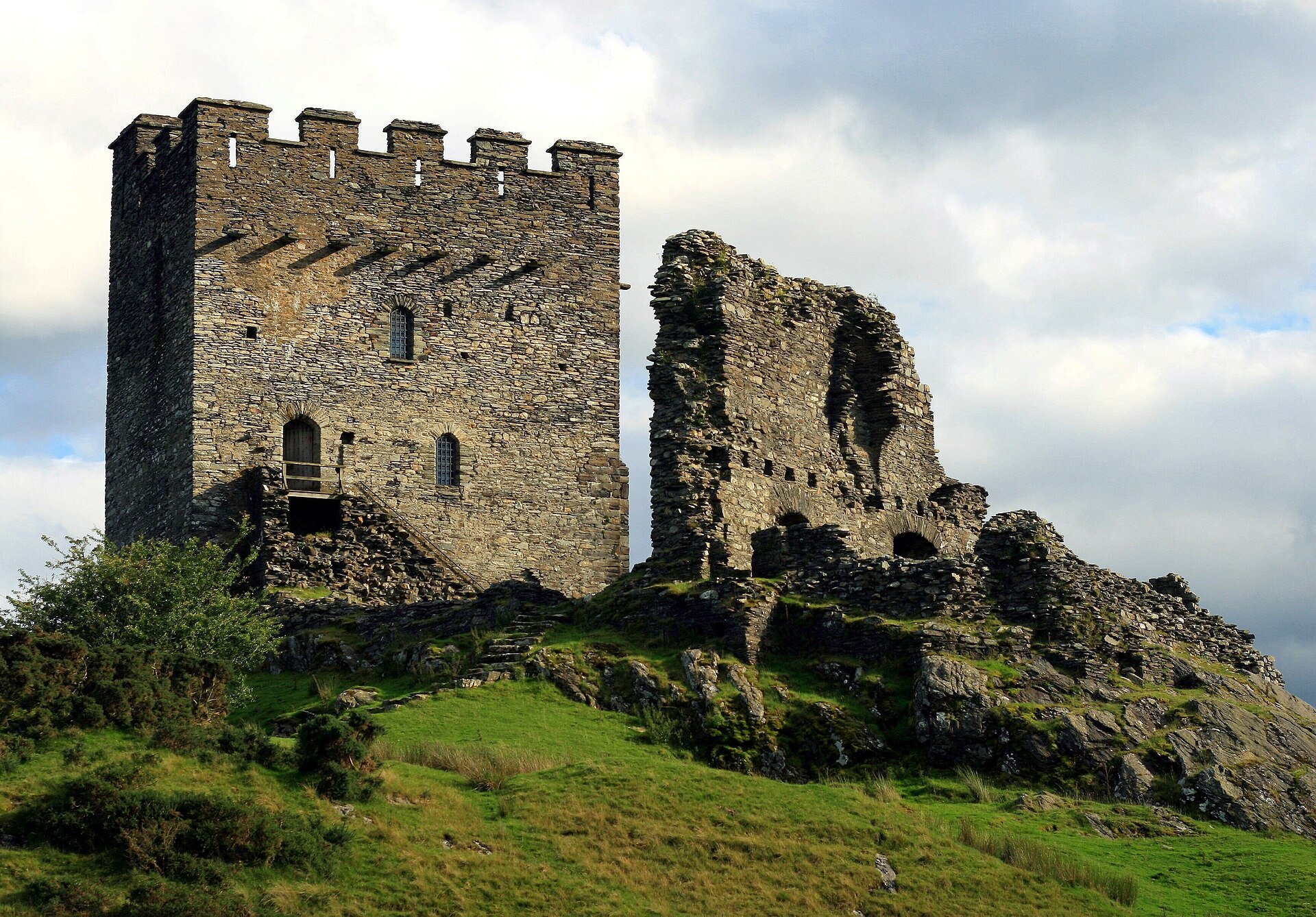
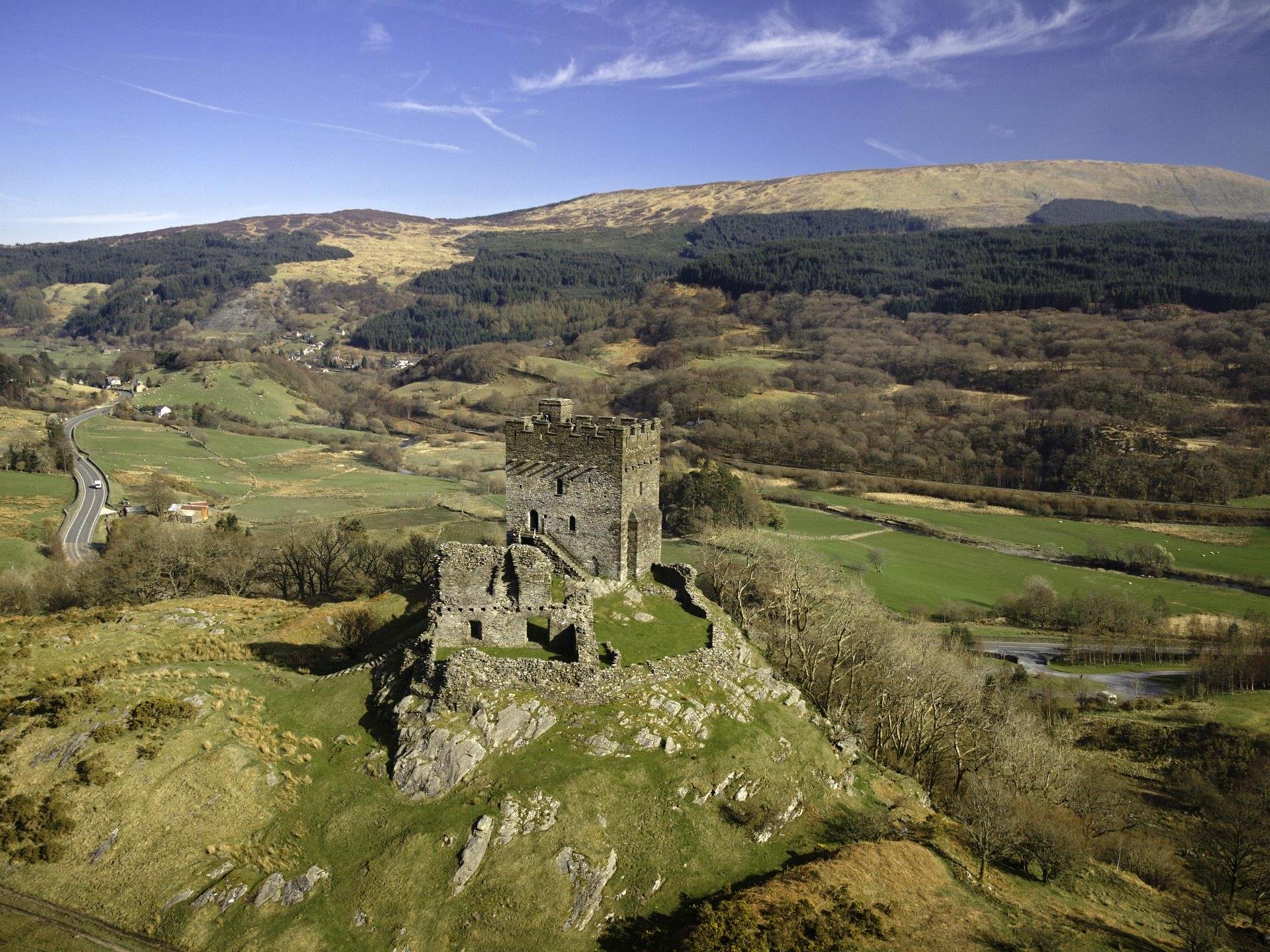
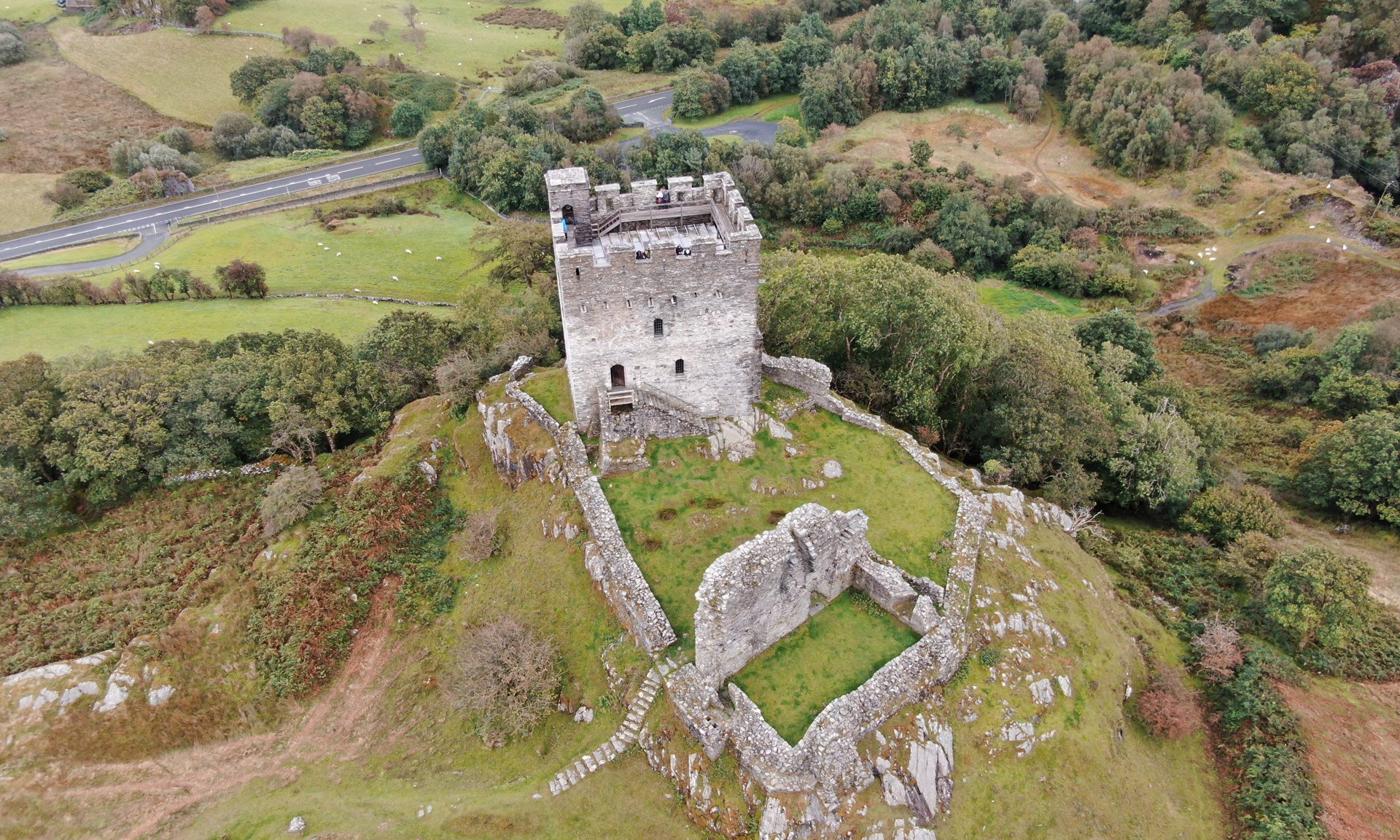
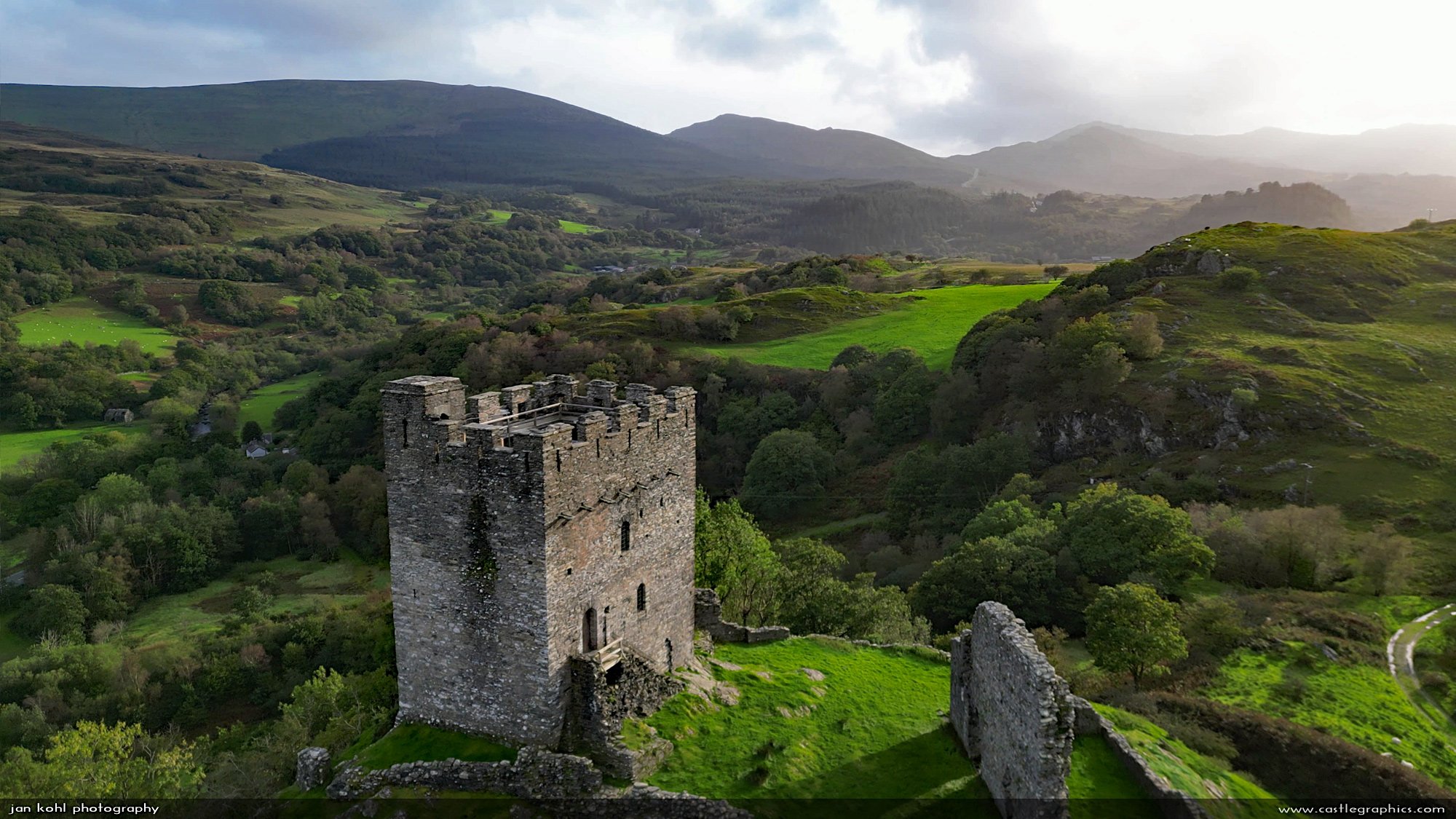
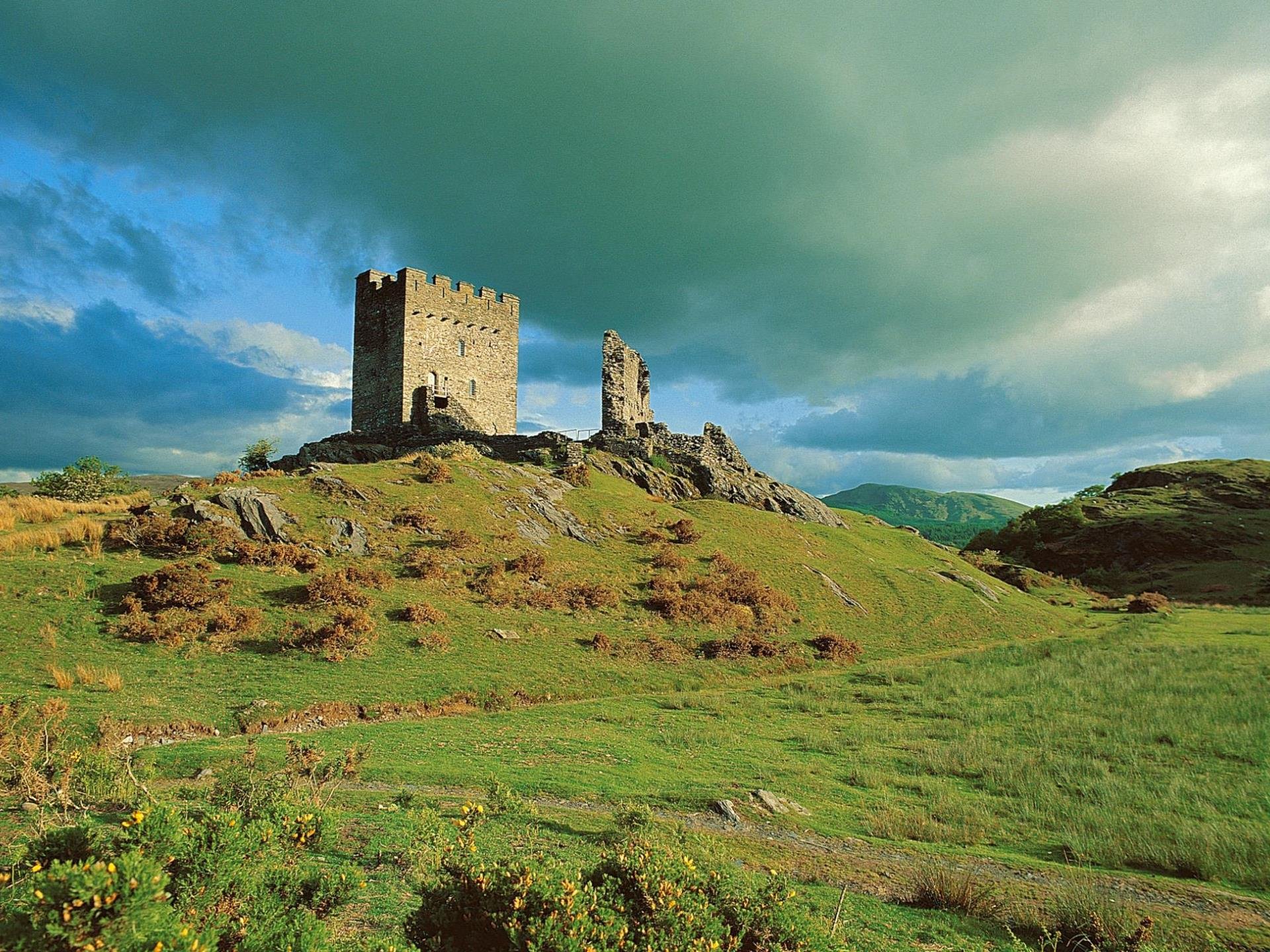
Legends and Stories
The castle holds few surviving myths, but local tradition claims it was the birthplace of Llywelyn the Great. This story appears in guidebooks such as the Cadw visitor panels at the site. However, historians have debated its accuracy, suggesting he was more likely born in nearby Tomen Castell, a smaller fortification visible from the castle.
Another tale describes it as a symbol of resistance during the final years of Welsh independence. Local oral history, as mentioned in Visit Conwy's tourism guides, recounts how the castle stood firm until Edward I's armies overcame it in 1283.
Visitors on TripAdvisor frequently mention the atmospheric setting, with some noting feelings of isolation and the echoes of past Welsh defiance while standing in the ruins.
Visiting
It is managed by Cadw and open with the following arrangements.
Opening Times
1 April – 30 September: 10:00–16:00 on Fridays, Saturdays, Sundays, and Bank Holidays; last admission 30 minutes before closing.
1 October – 31 March: Open for external viewing only, 10:00–16:00 daily; last admission 30 minutes before closing.
Closed on 24, 25, 26 December and 1 January.
Admission
Adults: £4
Family (2 adults + children): £11.90
Free entry for Cadw members and Explorer Pass holders.
Directions & Access
No dedicated parking at the castle. A layby on the A470, 500 m east, provides public right-of-way access.
Avoid parking near the farmhouse or using private routes.
Terrain is strenuous; narrow steep pathways lead to the keep.
Public transport accessible: the Conwy Valley railway line serves Dolwyddelan, Pont-y-Pant, and Roman Bridge stations – request stops on the line.
Facilities & Policies
Dogs: Assistance dogs only. Some TripAdvisor reviews confirm this strict policy.
No smoking or drones allowed.
No shop, toilets, or refreshment facilities on site.
Uneven ground and sharp drops; visitors should wear sturdy footwear.
No disability parking; site is not wheelchair accessible.
Tip
Visit on a Fri–Sun in summer to explore inside the keep. At other times, you’ll still enjoy dramatic exterior views.
Nearby Attractions
Several sites lie close to the castle. They offer historical insight, outdoor adventure, and local culture.
Tŷ Mawr Wybrnant
A 16th‑century thatched farmhouse, birthplace of Bishop William Morgan, translator of the first complete Welsh Bible .
Gwydir Forest Park
Offers walking, mountain biking, and forest scenery .
Zip World Llechwedd
Features underground golf, cavern tours, the Titan zip‑line, and Bounce Below trampoline galleries.
St Gwyddelan’s Church
Village parish church noted on TripAdvisor as the second top attraction in Dolwyddelan.
Chwarel Ddu Quarry
Early 19th‑century slate quarry beneath the castle, offering industrial archaeology for walkers .
Moel Siabod
At 872 m, this peak dominates the skyline and is a popular climb with views of up to 13 of Wales's highest summits .
These attractions make Dolwyddelan a hub for heritage, active days, and local exploration.
Visitor Tips
Bring sturdy walking shoes; the approach involves steep and uneven paths
Visit between Friday and Sunday in summer for internal access to the keep
Allow around 1 hour for a complete visit, including the exterior walk
Carry water and snacks; there are no on-site refreshment facilities
Consider combining your trip with Tŷ Mawr Wybrnant or Moel Siabod walks
Check Cadw’s website before visiting for any seasonal changes or closures
Dogs are only allowed if they are assistance animals—plan accordingly
The nearest train station is Dolwyddelan, but trains are infrequent; check timetables in advance
FAQs
-
Most visitors spend 30–60 minutes exploring the site, including time to enjoy the views from the keep and read the Cadw information panels.
-
Yes, when the castle is closed, the exterior remains accessible via a public footpath, free of charge. Internal access requires a paid ticket on open days.
-
Yes, but public transport is limited. The nearest station, Dolwyddelan, is on a rural line with request-stop services. Walking from the station takes about 15 minutes.
-
Only assistance dogs are allowed on the site. This is confirmed by Cadw’s site rules.
-
No dedicated parking exists. Visitors park in a layby 500 metres from the site and walk via a public footpath.
Wrapping it Up
This castle offers a unique glimpse into native Welsh castle architecture. Built by Llywelyn the Great, it served as both a military stronghold and a symbol of Welsh independence. The site is compact yet historically significant, with panoramic views of Snowdonia. Though modest in scale, it holds great cultural value for visitors interested in medieval Welsh history. Its rugged location, straightforward layout, and links to the Princes of Gwynedd make it a memorable stop in North Wales.
Sources
Cadw – Castell Dolwyddelan
Official Welsh Government site for heritage sites, providing history, visiting times, and entry prices.
https://cadw.gov.wales/visit/places-to-visit/castell-dolwyddelan
Visit Snowdonia
Regional tourism site offering nearby attractions and outdoor activity information.
https://www.visitsnowdonia.info/dolwyddelan-castle
Visit Mid Wales
Tourist guide detailing castle highlights, facilities, and ticketing.
https://www.visitmidwales.co.uk/showmewales/things-to-do/Dolwyddelan-Castle-%28Cadw%29-p1716281
Crazy About Castles
Independent guide to Welsh castles, with practical visitor tips and historical context.
https://crazyaboutcastles.com/welsh-castles/dolwyddelan-castle
Wikipedia – Dolwyddelan
General reference for location facts, public transport details, and nearby walking routes.
https://en.wikipedia.org/wiki/Dolwyddelan
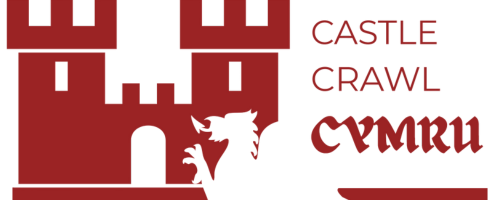



The castle was built on the site of a medieval fortified manor, the current structure was designed by architect Thomas Hopper for the wealthy Pennant family.